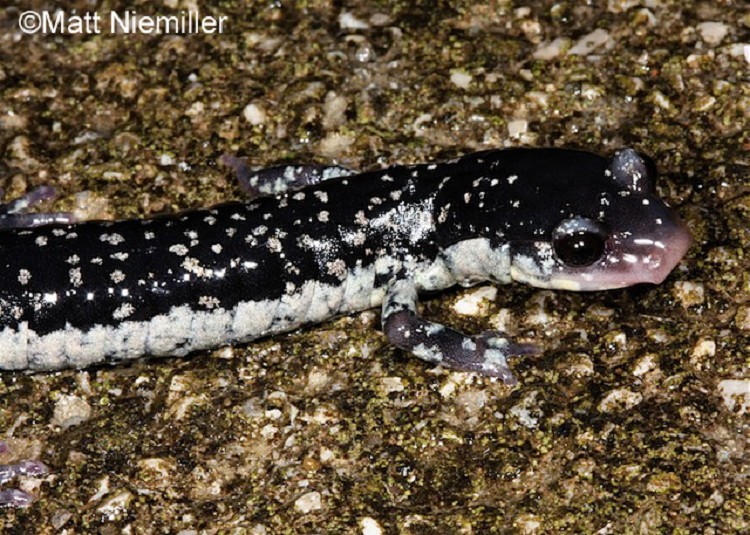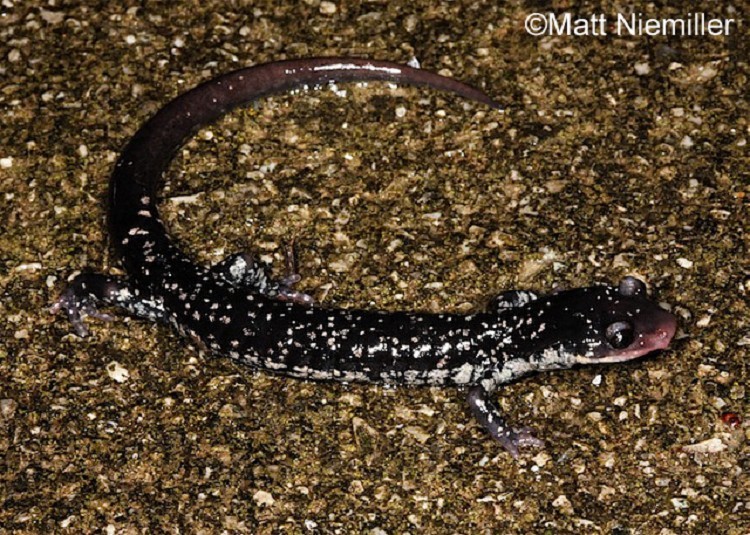Tellico Salamander
Plethodon aureolusLittle is known about the Tellico salamander that occurs in a small range on the western slopes of the Unicoi Mountains and adjacent lowlands between the Little Tennessee and Hiwassee rivers. Formerly a subspecies of P. glutinosus.
Description: A large, black salamander (4.0 to 6.0 inches in length) with many, brass-colored spots on the dorsum. Sides have white or yellowish spots. The belly is gray with a lighter chin. The tail is round in cross-section.
Similar Species:
- Red-cheeked Salamander lacks brassy spots on the back and lateral white spots.
- Southern Appalachian Salamander is generally larger and has white dorsal spots.
- Northern Slimy Salamander can only be separated from Tellico Salamander by biochemical characters.
Habitat: Mountain and stream valley woodlands.
Diet: A variety of invertebrates.
Breeding information: Unknown. As with all Plethodon species, Tellico Salamanders do not migrate to breeding grounds. Eggs are probably placed in underground cavities.
Status in Tennessee: The Tellico Salamander is listed as “In Need of Management” by TWRA. Appears to be more resilient to timber harvesting disturbance based upon its occurrence in second-growth forest.
Fun Facts:
- Members of the Plethodon glutinosus complex produce large amounts of skin secretions that are very sticky.
Best places to see in Tennessee: Low elevation woodlands on western slopes of the Unicoi Mountains.

